- Home
- D. H. Lawrence
Life with a Capital L Page 5
Life with a Capital L Read online
Page 5
Had Œdipus, Hamlet, Macbeth been weaker, less full of real, potent life, they would have made no tragedy; they would have comprehended and contrived some arrangement of their affairs, sheltering in the human morality from the great stress and attack of the unknown morality. But being, as they are, men to the fullest capacity, when they find themselves, daggers drawn, with the very forces of life itself, they can only fight till they themselves are killed, since the morality of life, the greater morality, is eternally unalterable and invincible. It can be dodged for some time, but not opposed. On the other hand, Anna, Eustacia, Tess or Sue – what was there in their position that was necessarily tragic? Necessarily painful it was, but they were not at war with God, only with Society. Yet they were all cowed by the mere judgment of man upon them, and all the while by their own souls they were right. And the judgment of men killed them, not the judgment of their own souls or the judgment of Eternal God.
Which is the weakness of modern tragedy, where transgression against the social code is made to bring destruction, as though the social code worked our irrevocable fate. Like Clym, the map appears to us more real than the land. Shortsighted almost to blindness, we pore over the chart, map out journeys, and confirm them: and we cannot see life itself giving us the lie the whole time.
Chapter 7
Of Being and Not-Being
In life, then, no new thing has ever arisen, or can arise, save out of the impulse of the male upon the female, the female upon the male. The interaction of the male and female spirit begot the wheel, the plough, and the first utterance that was made on the face of the earth.
As in my flower, the pistil, female, is the centre and swivel, the stamens, male, are close-clasping the hub, and the blossom is the great motion outwards into the unknown, so in a man’s life, the female is the swivel and centre on which he turns closely, producing his movement. And the female to a man is the obvious form, a woman. And normally, the centre, the turning pivot, of a man’s life is his sex-life, the centre and swivel of his being is the sexual act. Upon this turns the whole rest of his life, from this emanates every motion he betrays. And that this should be so, every man makes his effort. The supreme effort each man makes, for himself, is the effort to clasp as a hub the woman who shall be the axle, compelling him to true motion, without aberration. The supreme desire of every man is for mating with a woman, such that the sexual act be the closest, most concentrated motion in his life, closest upon the axle, the prime movement of himself, of which all the rest of his motion is a continuance in the same kind. And the vital desire of every woman is that she shall be clasped as axle to the hub of the man, that his motion shall portray her motionlessness, convey her static being into movement, complete and radiating out into infinity, starting from her stable eternality, and reaching eternity again, after having covered the whole of time.
This is complete movement: man upon woman, woman within man. This is the desire, the achieving of which, frictionless, is impossible, yet for which every man will try, with greater or less intensity, achieving more or less success.
This is the desire of every man, that his movement, the manner of his walk, and the supremest effort of his mind, shall be the pulsation outwards from stimulus received in the sex, in the sexual act, that the woman of his body shall be the begetter of his whole life, that she, in her female spirit, shall beget in him his idea, his motion, himself. When a man shall look at the work of his hands, that has succeeded, and shall know that it was begotten in him by the woman of his body, then he shall know what fundamental happiness is. Just as when a woman shall look at her child, that was begotten in her by the man of her spirit, she shall know what it is to be happy, fundamentally. But when a woman looks at her children that were begotten in her by a strange man, not the man of her spirit, she must know what it is to be happy with anguish, and to love with pain. So with a man who looks at his work which was not begotten in him by the woman of his body. He rejoices, troubles, and suffers an agony like death which contains resurrection.
For while, ideally, the soul of the woman possesses the soul of the man, procreates it and makes it big with new idea, motion, in the sexual act, yet, most commonly, it is not so. Usually, sex is only functional, a matter of relief or sensation, equivalent to eating or drinking or passing of excrement.
Then, if a man must produce work, he must produce it to some other than the woman of his body: as, in the same case, if a woman produce children, it must be to some other than the man of her desire.
In this case, a man must seek elsewhere than in woman for the female to possess his soul, to fertilize him and make him try with increase. And the female exists in much more than his woman. And the finding of it for himself gives a man his vision, his God.
And since no man and no woman can get a perfect mate, nor obtain complete satisfaction at all times, each man according to his need must have a God, an idea, that shall compel him to the movement of his own being. And then, when he lies with his woman, the man may concurrently be with God, and so get increase of his soul. Or he may have communion with his God apart and averse from the woman.
Every man seeks in woman for that which is stable, eternal. And if, under his motion, this break down in her, in the particular woman, so that she be no axle for his hub, but be driven away from herself, then he must seek elsewhere for his stability, for the centre to himself.
Then either he must seek another woman, or he must seek to make conscious his desire to find a symbol, to create and define in his consciousness the object of his desire, so that he may have it at will, for his own complete satisfaction.
In doing this latter, he seeks with his desire the female elsewhere than in the particular woman. Since everything that is, is either male or female or both, whether it be clouds or sunshine or hills or trees or a fallen feather from a bird, therefore in other things and in such things man seeks for his complement. And he must at last always call God the unutterable and the inexpressible, the unknowable, because it is his unrealized complement.
But all gods have some attributes in common. They are the unexpressed Absolute: eternal, infinite, unchanging. Eternal, Infinite, Unchanging: the High God of all Humanity is this.
Yet man, the male, is essentially a thing of movement and time and change. Until he is stirred into thought, he is complete in movement and change. But once he thinks, he must have the Absolute, the Eternal, Infinite, Unchanging.
And Man is stirred into thought by dissatisfaction, or unsatisfaction, as heat is born of friction. Consciousness is the same effort in male and female to obtain perfect frictionless interaction, perfect as Nirvana. It is the reflex both of male and female from defect in their dual motion. Being reflex from the dual motion, consciousness contains the two in one, and is therefore in itself Absolute.
And desire is the admitting of deficiency. And the embodiment of the object of desire reveals the original defect or the defaulture. So that the attributes of God will reveal that which man lacked and yearned for in his living. And these attributes are always, in their essence, Eternality, Infinity, Immutability.
And these are the qualities man feels in woman, as a principle. Let a man walk alone on the face of the earth, and he feels himself like a loose speck blown at random. Let him have a woman to whom he belongs, and he will feel as though he had a wall to back up against; even though the woman be mentally a fool. No man can endure the sense of space, of chaos, on four sides of himself. It drives him mad. He must be able to put his back to the wall. And this wall is his woman.
From her he has a sense of stability. She supplies him with the feeling of Immutability, Permanence, Eternality. He himself is a raging activity, change potent within change. He dare not even conceive of himself, save when he is sure of the woman permanent beneath him, beside him. He dare not leap into the unknown save from the sure stability of the unyielding female. Like a wheel, if he turn without an axle, his motion is wandering neutrality.
So always, the fear of a man is that h
e shall find no axle for his motion, that no woman can centralize his activity. And always, the fear of a woman is that she can find no hub for her stability, no man to convey into motion her full stability. Either the particular woman breaks down before the stress of the man, becomes erratic herself, no stay, no centre; or else the man is insufficiently active to carry out the static principle of his female, of his woman.
So life consists in the dual form of the Will-to-Motion and the Will-to-Inertia, and everything we see and know and are is the resultant of these two Wills. But the One Will, of which they are dual forms, that is as yet unthinkable.
And according as the Will-to-Motion predominates in race, or the Will-to-Inertia, so must that race’s conception of the One Will enlarge the attributes which are lacking or deficient in the race.
Since there is never to be found a perfect balance or accord of the two Wills, but always one triumphs over the other, in life, according to our knowledge, so must the human effort be always to recover balance, to symbolize and so to possess that which is missing. Which is the religious effort of Man.
There seems to be a fundamental, insuperable division, difference, between man’s artistic effort and his religious effort. The two efforts are mixed with each other, as they are revealed, but all the while they remain two, not one, all the while they are separate, single, never compounded.
The religious effort is to conceive, to symbolize that which the human soul, or the soul of the race, lacks, that which it is not, and which it requires, yearns for. It is the portrayal of that complement to the race-life which is known only as a desire: it is the symbolizing of a great desire, the statement of the desire in terms which have no meaning apart from the desire.
Whereas the artistic effort is the effort of utterance, the supreme effort of expressing knowledge, that which has been for once, that which was enacted, where the two wills met and intersected and left their result, complete for the moment. The artistic effort is the portraying of a moment of union between the two wills, according to knowledge. The religious effort is the portrayal or symbolizing of the eternal union of the two wills, according to aspiration. But in this eternal union, the features of one or the other Will are always salient.
The dual Will we call the Will-to-Motion and the Will-to-Inertia. These cause the whole of life, from the ebb and flow of a wave, to the stable equilibrium of the whole universe, from birth and being and knowledge to death and decay and forgetfulness. And the Will-to-Motion we call the male will or spirit, the Will-to-Inertia the female. This will to inertia is not negative, and the other positive. Rather, according to some conception, is Motion negative and Inertia, the static, geometric idea, positive. That is according to the point of view.
According to the race-conception of God, we can see whether in that race the male or the female element triumphs, becomes predominant.
But it must first be seen that the division into male and female is arbitrary, for the purpose of thought. The rapid motion of the rim of a wheel is the same as the perfect rest at the centre of the wheel. How can one divide them? Motion and rest are the same, when seen completely. Motion is only true of things outside oneself. When I am in a moving train, strictly, the land moves under me, I and the train are still. If I were both land and train, if I were large enough, there would be no motion. And if I were very very small, every fibre of the train would be in motion for me, the point of rest would be infinitely reduced.
How can one say, there is motion and rest? If all things move together in one infinite motion, that is rest. Rest and motion are only two degrees of motion, or two degrees of rest. Infinite motion and infinite rest are the same thing. It is obvious. Since, if motion were infinite, there would be no standing-ground from which to regard it as motion. And the same with rest.
It is easier to conceive that there is no such thing as rest. For a thing to us at rest is only a thing travelling at our own rate of motion: from another point of view, it is a thing moving at the lowest rate of motion we can recognize. But this table on which I write, which I call at rest, I know is really in motion.
So there is no such thing as rest. There is only infinite motion. But infinite motion must contain every degree of rest. So that motion and rest are the same thing. Rest is the lowest speed of motion which I recognize under normal conditions.
So how can one speak of a Will-to-Motion or a Will-to-Inertia, when there is no such thing as rest or motion? And yet, starting from any given degree of motion, and travelling forward in ever-increasing degree, one comes to a state of speed which covers the whole of space instantaneously, and is therefore rest, utter rest. And starting from the same speed and reducing the motion infinitely, one reaches the same condition of utter rest. And the direction or method of approach to this infinite rest is different to our conception. And only travelling upon the slower, does the swifter reach the infinite rest of inertia: which is the same as the infinite rest of speed, the two things having united to surpass our comprehension.
So we may speak of Male and Female, of the Will-to-Motion and of the Will-to-Inertia. And so, looking at a race, we can say whether the Will-to-Inertia or the Will-to-Motion has gained the ascendancy, and in which direction this race tends to disappear.
For it is as if life were a double cycle, of men and women, facing opposite ways, travelling opposite ways, revolving upon each other, man reaching forward with outstretched hand, woman reaching forward with outstretched hand, and neither able to move till their hands have grasped each other, when they draw towards each other from opposite directions, draw nearer and nearer, each travelling in his separate cycle, till the two are abreast, and side by side, until even they pass on again, away from each other, travelling their opposite ways to the same infinite goal.
Each travelling to the same goal of infinity, but entering it from the opposite ends of space. And man, remembering what lies behind him, how the hands met and grasped and tore apart, utters his tragic art. Then moreover, facing the other way into the unknown, conscious of the tug of the goal at his heart, he hails the woman coming from the place whither he is travelling, searches in her for signs, and makes his God from the suggestion he receives, as she advances.
Then she draws near, and he is full of delight. She is so close, that they touch, and then there is a joyful utterance of religious art. They are torn apart, and he gives the cry of tragedy, and goes on remembering, till the dance slows down and breaks, and there is only a crowd.
It is as if this cycle dance where the female makes the chain with the male becomes ever wider, ever more extended, and the further they get from the source, from the infinity, the more distinct and individual do the dancers become. At first they are only figures. In the Jewish cycle, David, with his hand stretched forth, cannot recognize the woman, the female. He can only recognize some likeness of himself. For both he and she have not danced very far from the source and origin where they were both one. Though she is in the gross utterly other than he, yet she is not very distinct from him. And he hails her Father, Almighty, God, Beloved, Strength, hails her in his own image. And with hand outstretched, fearful and passionate, he reaches to her. But it is Solomon who touches her hand, with rapture and joy, and cries out his gladness in the Song of Songs. Who is the Shulamite but God come close, for a moment, into physical contact? The Song may be a drama: it is still religious art. It is the development of the Psalms. It is utterly different from the Book of Job, which is remembrance.
Always the threefold utterance: the declaring of the God seen approaching, the rapture of contact, the anguished joy of remembrance, when the meeting has passed into separation. Such is religion, religious art, and tragic art.
But the chain is not broken by the letting-go of hands. It is broken by the overbearing of one cycle by the other. David, when he lay with a woman, lay also with God; Solomon, when he lay with a woman, knew God and possessed Him and was possessed by Him. For in Solomon and in the Woman, the male clasped hands with the female.
&nb
sp; But in the terrible moment when they should break free again, the male in the Jew was too weak, the female overbore him. He remained in the grip of the female. The force of inertia overpowered him, and he remained remembering. But very true had been David’s vision, and very real Solomon’s contact. So that the living thing was conserved, kept always alive and powerful, but restrained, restricted, partial.
For centuries, the Jew knew God as David had perceived Him, as Solomon had known Him. It was the God of the body, the rudimentary God of physical laws and physical functions. The Jew lived on in physical contact with God. Each of his physical functions he shared with God; he kept his body always like the body of a bride ready to serve the bridegroom. He had become the servant of his God, the female, passive. The female in him predominated, held him passive, set utter bounds to his movement, to his roving, kept his mind as a slave to guard intact the state of sensation wherein he found himself. Which persisted century after century, the secret, scrupulous voluptuousness of the Jew, become almost self-voluptuousness, engaged in the consciousness of his own physique, or in the extracted existence of his own physique. His own physique included the woman, naturally, since the man’s body included the woman’s, the woman’s the man’s. His religion had become a physical morality, deep and fundamental, but entirely of one sort. Its living element was this scrupulous physical voluptuousness, wonderful and satisfying in a large measure.

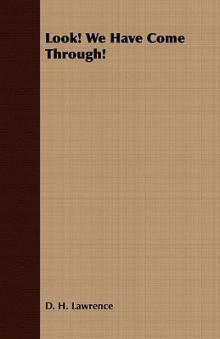 Look! We Have Come Through!
Look! We Have Come Through! Women in Love
Women in Love The Ladybird
The Ladybird The Rainbow
The Rainbow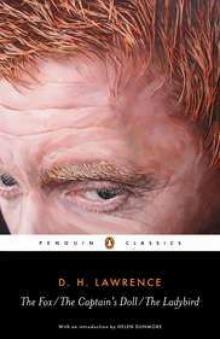 The Captain's Dol
The Captain's Dol The White Peacock
The White Peacock Amores
Amores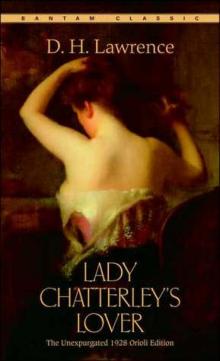 Lady Chatterley's Lover
Lady Chatterley's Lover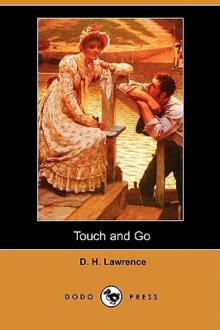 Touch and Go
Touch and Go The Wintry Peacock
The Wintry Peacock Life with a Capital L
Life with a Capital L The Lost Girl
The Lost Girl Sons and Lovers
Sons and Lovers England, My England
England, My England New Poems
New Poems Twilight in Italy
Twilight in Italy The Trespasser
The Trespasser The Collected Short Stories
The Collected Short Stories The First Lady Chatterley's Lover
The First Lady Chatterley's Lover Kangaroo
Kangaroo Bay
Bay Complete Works of D.H. Lawrence
Complete Works of D.H. Lawrence D H Lawrence- The Dover Reader
D H Lawrence- The Dover Reader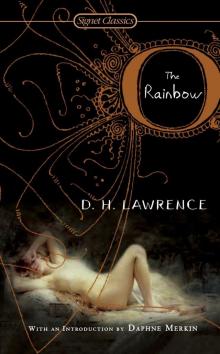 The Rainbow (100th Anniversary ed.)
The Rainbow (100th Anniversary ed.) The Prussian Officer
The Prussian Officer Women in Love (Barnes & Noble Classics Series)
Women in Love (Barnes & Noble Classics Series) John Thomas and Lady Jane
John Thomas and Lady Jane The Bad Side of Books
The Bad Side of Books Sons and Lovers (Barnes & Noble Classics Series)
Sons and Lovers (Barnes & Noble Classics Series) Selected Stories
Selected Stories Collected Short Stories
Collected Short Stories Complete Works of D.H. Lawrence (Illustrated)
Complete Works of D.H. Lawrence (Illustrated)